Note
Go to the end to download the full example code. or to run this example in your browser via Binder
Workflow with Feflowlib: Hydro-thermal model - conversion, simulation and post-processing#
In this example we show how a simple hydro thermal FEFLOW model can be converted to a pyvista.UnstructuredGrid and then be simulated in ot.
Necessary imports
import tempfile
from pathlib import Path
import pyvista as pv
import ogstools as ot
from ogstools.examples import feflow_model_2D_HT
1. Load a FEFLOW model (.fem) as a FeflowModel object to further work it. During the initialisation, the FEFLOW file is converted.
temp_dir = Path(tempfile.mkdtemp("feflow_test_simulation"))
feflow_model = ot.FeflowModel(feflow_model_2D_HT, temp_dir / "2D_HT_model.vtu")
Plot the temperature simulated in FEFLOW on the mesh, and print information about the mesh.
feflow_temperature = ot.variables.temperature.replace(data_name="P_TEMP")
ot.plot.contourf(feflow_model.mesh, feflow_temperature)
print(feflow_model.mesh)
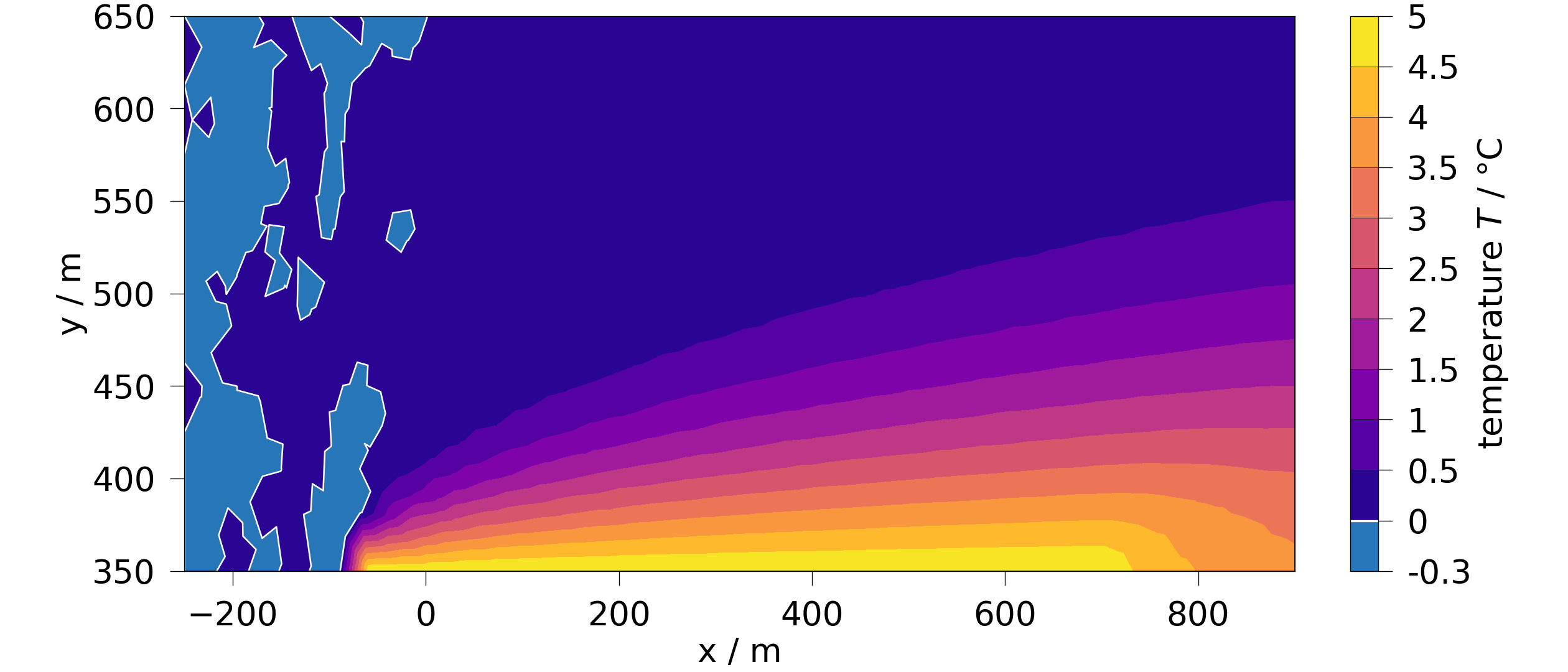
UnstructuredGrid (0x792aa0186320)
N Cells: 6260
N Points: 3228
X Bounds: -2.500e+02, 9.000e+02
Y Bounds: 3.500e+02, 6.500e+02
Z Bounds: 0.000e+00, 0.000e+00
N Arrays: 34
Extract the subdomains.
subdomains = feflow_model.subdomains
# Since there can be multiple boundary conditions in the subdomains, they are plotted iteratively.
plotter = pv.Plotter(shape=(len(subdomains), 1))
for i, (name, boundary_condition) in enumerate(subdomains.items()):
# topsurface refers to a cell based boundary condition.
if name != "topsurface":
plotter.subplot(i, 0)
plotter.add_mesh(boundary_condition, scalars=name)
plotter.view_xy()
plotter.show()
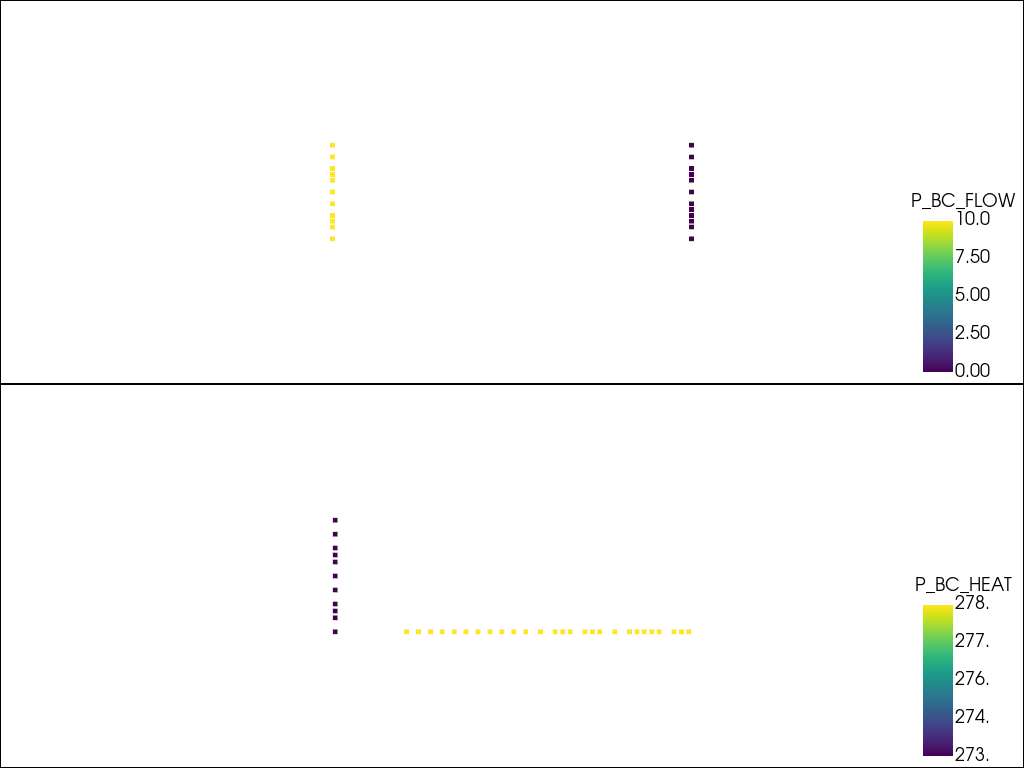
4. Setup a prj-file to run a OGS-simulation. Get the ogs6py model to create a prj-file and run the simulation.
feflow_model.setup_prj(end_time=1e11, time_stepping=[(1, 1e10)])
Run the model.
feflow_model.run()
Project file written to output.
Simulation: /tmp/tmphhk9vfyrfeflow_test_simulation/2D_HT_model.prj
Status: finished successfully.
Execution took 2.134162664413452 s
Read the results and plot them.
ms = ot.MeshSeries(temp_dir / "2D_HT_model.pvd")
# Read the last timestep:
ogs_sim_res = ms.mesh(ms.timesteps[-1])
"""
It is also possible to read the file directly with pyvista:
ogs_sim_res = pv.read(
temp_dir / "sim_2D_HT_model_ts_10_t_100000000000.000000.vtu"
)
"""
# Plot the hydraulic head/height, which was simulated in OGS.
hydraulic_head = ot.variables.Scalar(
data_name="HEAD_OGS", data_unit="m", output_unit="m"
)
ot.plot.contourf(ogs_sim_res, hydraulic_head)
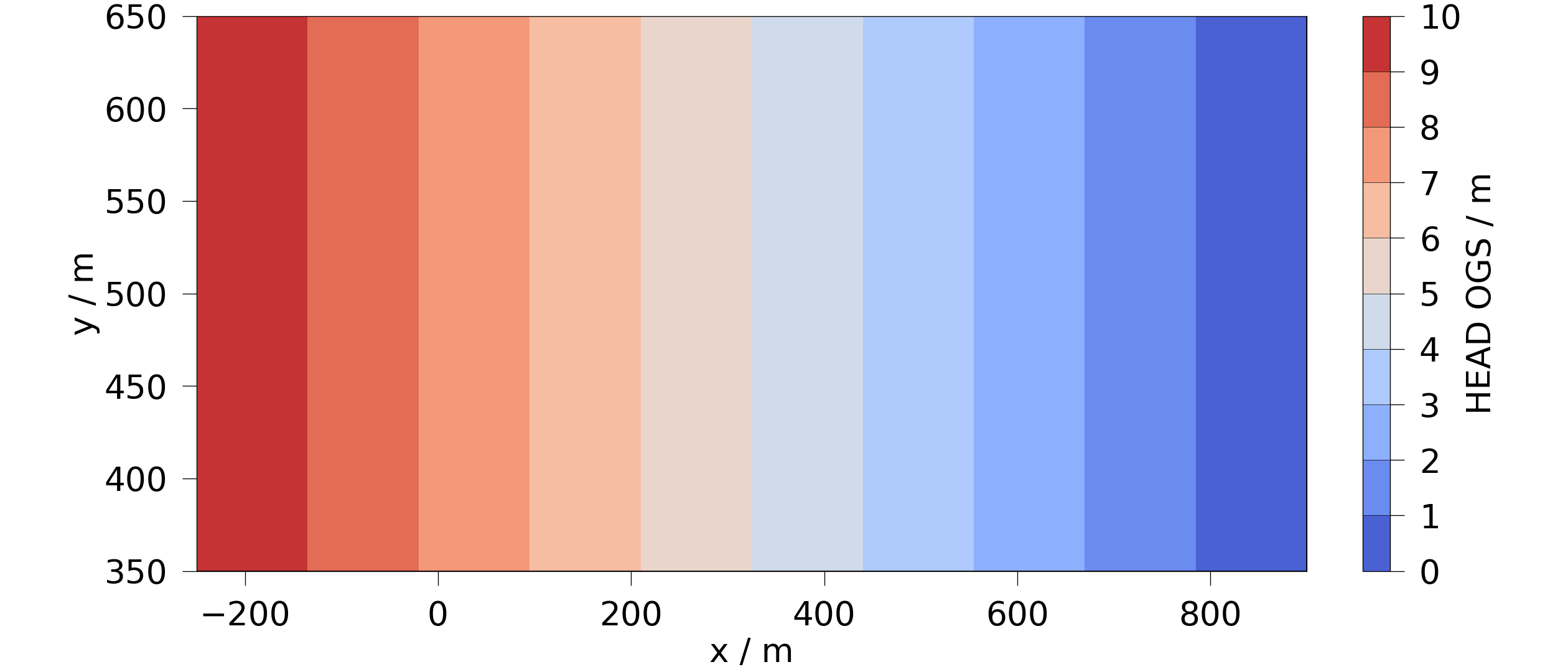
<Figure size 2520x1080 with 2 Axes>
Plot the temperature, which was simulated in OGS.
ot.plot.contourf(ogs_sim_res, ot.variables.temperature)
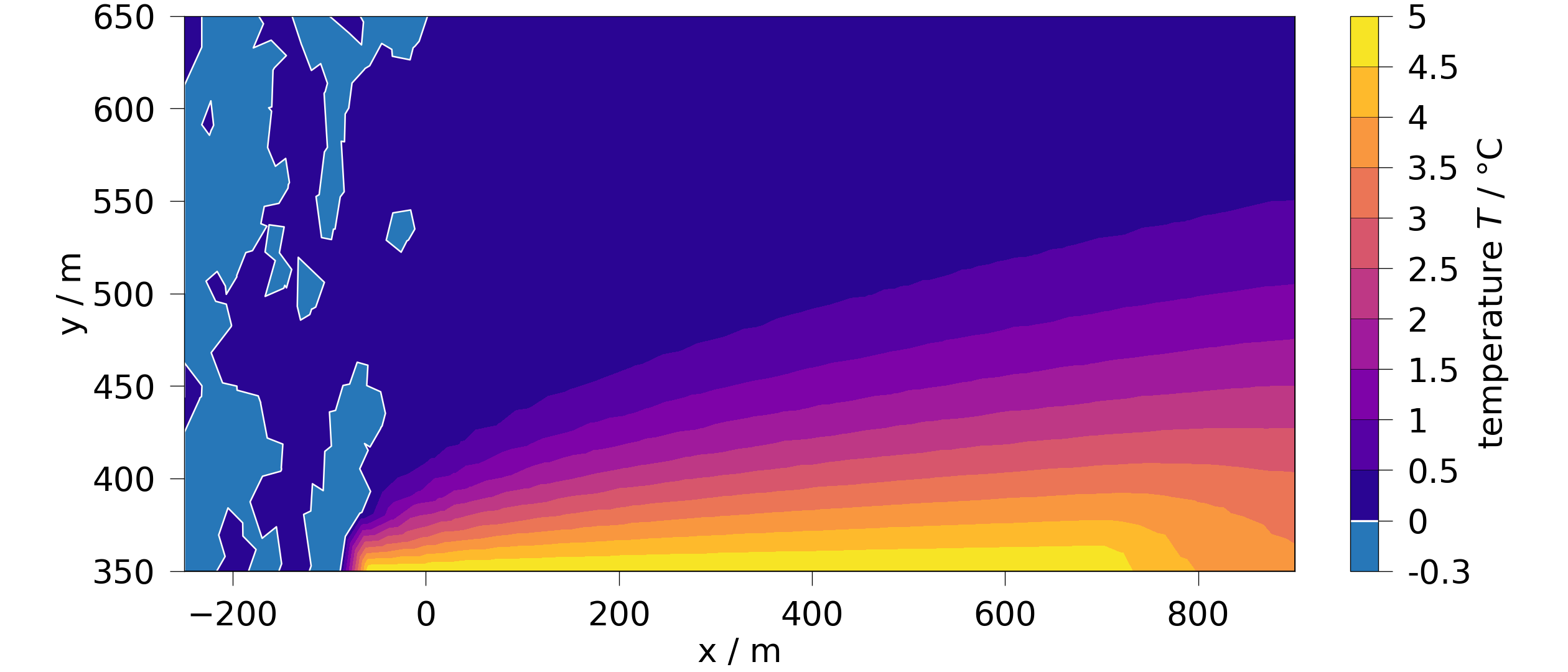
<Figure size 2520x1080 with 2 Axes>
Plot the difference between the FEFLOW and OGS simulation.
feflow_model.mesh["HEAD"] = feflow_model.mesh["P_HEAD"]
ogs_sim_res["HEAD"] = ogs_sim_res["HEAD_OGS"]
# Plot differences in hydraulic head/height.
diff_mesh = ot.meshlib.difference(feflow_model.mesh, ogs_sim_res, "HEAD")
hydraulic_head_diff = ot.variables.Scalar(
data_name="HEAD_difference", data_unit="m", output_unit="m"
)
ot.plot.contourf(diff_mesh, hydraulic_head_diff, vmin=-1.5e-9, vmax=1.5e-9)
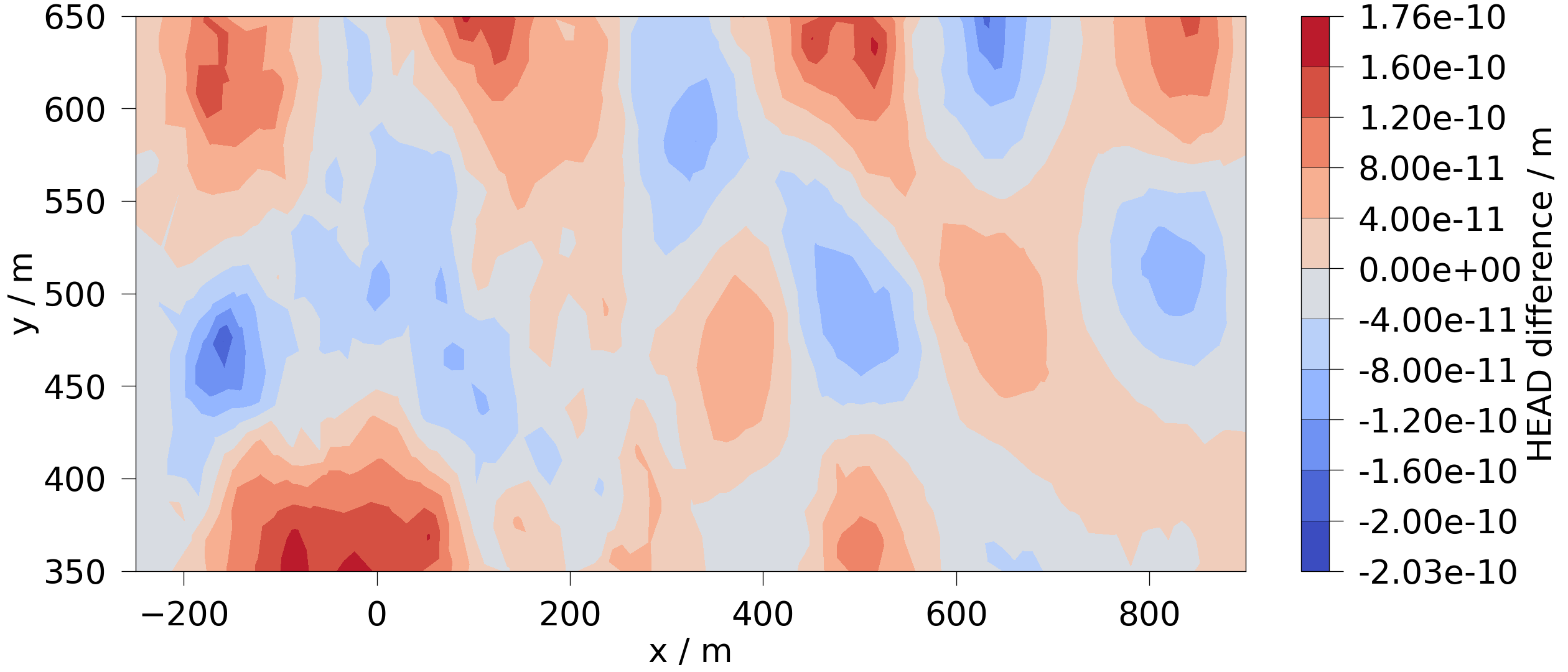
<Figure size 2520x1080 with 2 Axes>
Plot differences in temperature.
feflow_model.mesh["temperature"] = feflow_model.mesh["P_TEMP"]
# Plot differences in temperature.
diff_mesh = ot.meshlib.difference(
feflow_model.mesh, ogs_sim_res, ot.variables.temperature
)
ot.plot.contourf(
diff_mesh, ot.variables.temperature.difference, vmin=-8.7e-9, vmax=8.7e-9
)

<Figure size 2520x1080 with 2 Axes>
Total running time of the script: (0 minutes 6.015 seconds)

